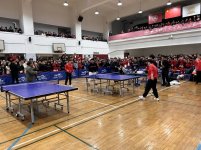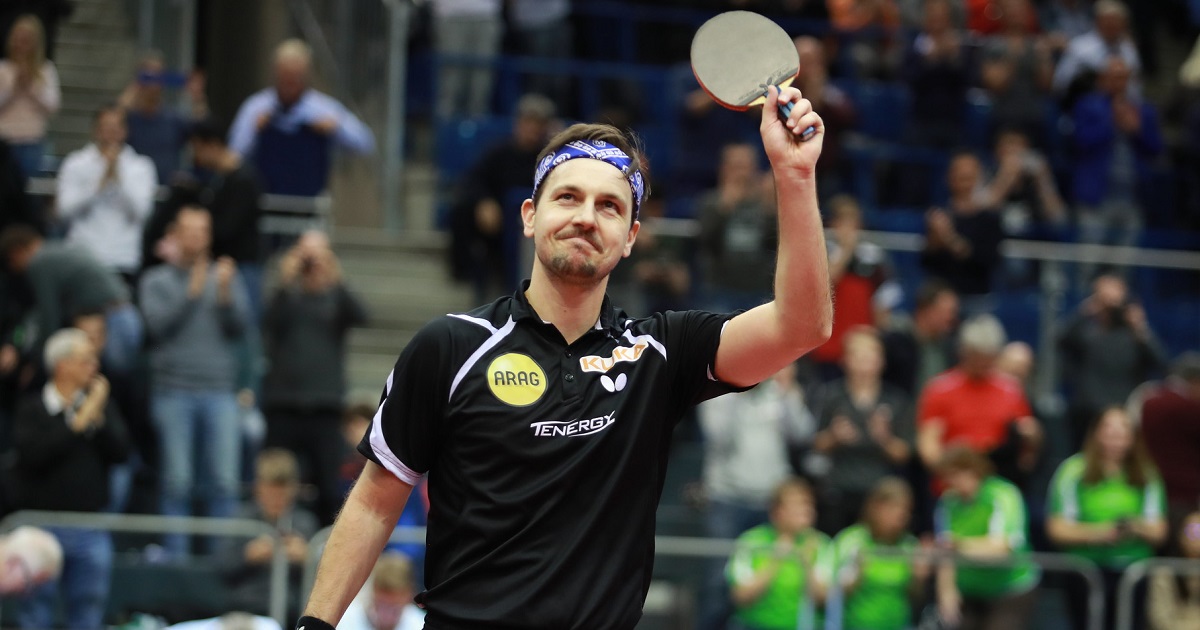That is good because then you can make a more direct shot.
Until, you are in that level, I actually don't feel it is necessary to even talk about high rotation of the ball.
What level? Responding to balls that come back quick is a matter of reflexes. Balls that come back high are normally easy to attack.
[quote[
Normally, coaches ask for consistency.
[/quote[
This is something we can agree on.
If you can't hit 20 or 30 shots on, what is the use of 1 high "PRO" level shot, but you get 1 out of 3 on?
Agreed
or the ball comes back, and your chance of getting the ball on drops another 10~90%?
Not quite right.
Table tennis cannot be compared to a pitcher or a golfer, who can just swing the club/arm and generate everything from a stand still.
You can if you are comparing hand speed. Softball pitchers don't simply swing their arms. There is a "windup" and a lot of body motion. Golfers may not move their feet but the weight transfer is important.
I mean, if you can't even move body correctly, or step correctly to generate the right body weight to life the ball up, talking about swinging the bat properly, is like trying to run before you can even craw.
It is always good to be in right position to hit the TT ball but really, it doesn't take as much effort to hit the ball as it does to get into position. Body weight is not that important because the weight of even small girls is MUCH more than the weight ( mass ) of a TT ball. It is paddle speed, how much you brush the ball ( getting the right spin to speed ratio ) and consistency that count. I can hit the ball fast enough with a flick of my wrist. Moving the ball is nothing. Moving me is something else.
When I coached non system trained players, I find it that they all want to swing harder and faster - this is very normal.
I need to undo they minds and tell them this:
1) if you can't get your feet there, you can't get your body there
2) if you can't get your body there, you can't get your arm there
3) if you can't get the above there, you are in no position to execute that stroke correctly
4) if you can't execute that stroke properly, you have little to no control over that stroke
5) and then you ask, why the ball some times goes in, and some times it doesn't.
Being able to swing faster is good as long as you can do it consistently. The trick is knowing how to hit the ball to get the right spin to speed ratio that is optimal for that situation.
One of our top high level players coming in (for grade 10), has a very good forehand.
She moves well, but she is too parallel to the ball (her legs) and she rallies too much on her arm. So in high power rallies, she is always on the loosing side when she needs to make more than 3 hits.
What is a high power rally? High power rallies are only needed when back from the table. She can get more than enough power just twisting her body with her legs and waist. The ball mass is so small compared to even a little girl. Again, it is speed, consistency and knowing how much to brush the ball to get the right spin to speed ratio that is important.
In training mode, she can get there in time (despite the wrong foot position), but in open play and her fundamental flaws shows.
This is how pro players weaknesses get exposed and how opposition teams work out game plans.
I can see that. Real play is much different from training mode. In real play the opponent does the unexpected. I don't think much of videos where people are just hitting the ball back and forth in a predictable way. When I was taking lessons from my third coach I told him to be random. We might concentrate on a particular problem but he was to do something random at least 1/10 times to catch me off guard. I called this the random drill. It simulated reality much better than a normal drill.
We saw this issue, and will need to change her over time. And obviously the player at first won't understand the problem - since she is on the higher part of the average in terms of results, and has done well in the 8 years prior (she used that power to over power her opponents), but the older you get, the bigger your fundamental flaws you have, the easier it will be exposed to when the rallies become faster and spinner.
A good coach should know how to get the most out of what you have. This is very important in American Football. If your female player likes playing close to the table then speed, reflexes, consistency and know how to setup a wining combo will win.
So if I am the opposition coach, I would say, don't even attack her, let her attack you and just block 5 to 10 balls on and she will eventually be late on her shot and hit the ball off.
That is what my first coach said about me. He would let me defeat myself. This is where the mental part of TT comes in. It is like watch Oliver Mader AKA "pushblocker" play. It is purely a mental gam.
Other than her flaws in movement, her arm only action will also lead to injuries.
So the head coach on the 1st week actually told her - don't hit so hard, reduce your power,
This is what I don't understand. You can only hit the ball so hard and still land the ball on the table. Unless you have a line of sight shot the ball must drop due to gravity or the Magnus effect.
So yeah, I think this apply to all.
You can't just hit harder or swing the bat faster.
I agree but hitting the ball harder is MUCH different than swinging the paddle faster. A faster paddle will put MORE energy into the ball in either velocity or spin. This can't be refuted. The only downside is being able to swing faster and still have consistency.
In theory, you also need to beware of injuries too!












